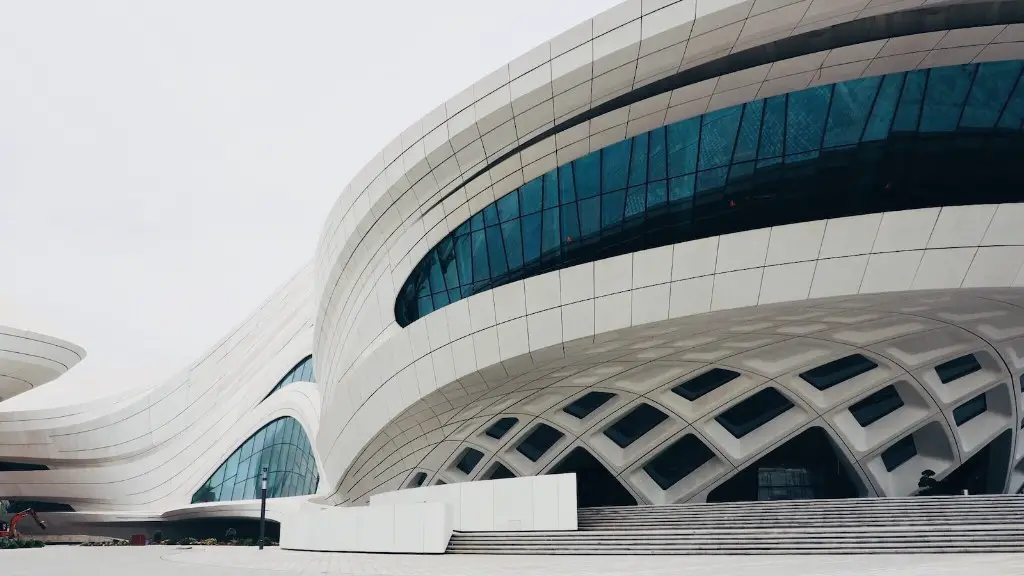As technology advances, 3D modelling becomes an increasingly useful tool for architects. With 3D models, architects can create renderings and previews of their designs, consulting clients, investors and contractors before the real building process begins. Intricate designs that could require months or even years to plan can now be created in a fraction of the time. This article will explore how 3D modelling is used in architecture, the advantages it provides and how architects are taking full advantage of its potential.
3D modelling allows architects to produce images and models of a building before it’s being built – this way, they can explore different designs, come up with alternative ideas, and adjust components as required. As the model is entirely controlled by the architect, they can play around with the design without any consequences and experiment in ways that weren’t possible previously. It also means they can easily and quickly make any required changes to the structure while still maintaining the overall design they had in mind.
One of the biggest advantages of 3D modelling is that it allows architects to create visuals of the design so that other people can visualise the structure before having to actually build it. This is especially helpful when dealing with contractors and potential investors, as it gives them a complete view of the structure and how it fits into the surrounding environment. Additionally, buildings created via 3D modelling are often much more accurate than those made with other design methods, as architects can create detailed plans that are easy to replicate, allowing for more efficient construction work.
But 3D modelling is not just used for planning and designing – it can also be used to help during the construction phase. By creating a digital mock-up of the building, architects can work out where all the components should go, ensuring everything fits correctly and that the structure meets all safety standards. Additionally, 3D modelling also allows architects to simulate pedestrian and vehicle movements to see how the building interacts with its environment, helping them to come up with better overall designs.
As technology continues to advance, 3D modelling is becoming an invaluable resource for architects. With its ability to create accurate and complex designs, simulate walkthroughs and visualise a structure before it is even built, 3D modelling is an incredible tool that can save architects time, money and energy while ultimately providing better designs.
Advantages of 3D Modelling
3D models have come with a lot of advantages which make them important tools in architecture, some of which include being able to: have more realistic models and visualisations with increased detail; design structures more quickly than with traditional methods; easily share data with others; and test out different designs without affecting the original model while still being able to view the other versions.
One of the main benefits of 3D modelling is its ability to produce realistic models that can be viewed from all angles. With 3D modelling, architects can get an exact visual representation of what the final structure will look like, allowing them to adjust or modify the design if necessary. This is particularly beneficial during the planning stage of a project when clients may need to see a visual representation before giving their approval. It also allows architects to fine-tune the details of the design, making sure everything looks perfect and conforms to any necessary safety regulations.
3D models are also incredibly useful when it comes to sharing data with others. All the data associated with the model can be easily shared with other members of the team, saving time and energy during the design process. They can also be used to quickly generate renderings of the building, which can then be presented to clients, contractors and investors to demonstrate the design.
Finally, 3D modelling makes it easy to test out different versions of a design before committing to one. Architects can easily make copies of the model and experiment with alternative structures without affecting the main design. This allows them to get a better understanding of how everything fits together and make sure their final design is the best it can be.
Examples of 3D Modelling Used in Architecture
The advantages of 3D modelling are evident in a variety of architectural projects, from large scale projects such as the Brooklyn Bridge and Sydney’s Opera House to small, local projects such as private residences and neighbourhoods. 3D models were used to visualise the design of the Brooklyn Bridge, allowing architects to better understand how each piece would fit together. The Sydney Opera House, meanwhile, was created using a combination of traditional planning, sketches and 3D models, while small projects such as private residences often use 3D modelling to create intricate designs with detailed features.
3D modelling is also used in contemporary architecture with architects such as Frank Gehry, who use it to create stunning, modern designs with endless possibilities. He is known for his curved, organic shapes and his design for the Guggenheim Museum in Bilbao is widely recognised as an example of how 3D modelling can be used to create awe-inspiring structures. Other architects such as Bjarke Ingels also make use of 3D modelling and simulations to explore innovative designs that combine aesthetics and functionality, allowing them to quickly and easily visualise the structure and make alterations if necessary.
Large-scale projects aside, 3D modelling is also being used for smaller, private projects. Architects are able to use 3D models to create customised designs for private homes, allowing them to create highly detailed and unique designs that suit their clients’ needs and tastes. Additionally, some architects also use 3D models to help develop whole neighbourhoods, providing a comprehensive view of the project and allowing for a more efficient and streamlined process.
The Limitations of 3D Modelling
Though 3D modelling has revolutionized the way architects design, there are still some limitations to its use. One of the main issues is that 3D models can become too complex to be rendered properly. As more and more detail is added, it can become difficult to make sense of the design and edit it effectively. This can lead to costly errors further down the line as mistakes might not be noticed until it’s too late.
Additionally, 3D modelling also takes time and money to use. Though the process is faster and more cost effective than traditional design methods, it still requires an investment for the software, hardware and training needed to use the tools effectively. Additionally, some architects may find themselves overwhelmed by the data and simulations, making it difficult to understand exactly what is going on and resulting in mistakes.
Another thing to consider is that 3D models can be too detailed and complex. While this is great for visualisation, it can make it difficult to make changes to the design quickly. This can cause issues when clients need to make adjustments to the plans at the last minute, as it can be difficult and time consuming to make changes to the model.
Finally, 3D modelling can be limited when it comes to alternative design styles. While it is great for creating traditional designs, it can be less useful for more creative approaches such as Frank Gehry’s organic shapes and curves. In these cases, architects may need to rely on alternative methods such as sketches or physical models.
The Future of 3D Modelling in Architecture
As technology advances, 3D modelling is becoming even more powerful and accessible for architects. With increased computing power and more advanced software, architects can now design and render comprehensive models with more detail than ever before. Additionally, the cost of 3D modelling is also going down, making it easier and more affordable for architects to gain access to powerful tools that can be used to create stunning and innovative designs.
3D modelling is also gaining popularity amongst other professionals in the building industry. Developers and contractors are increasingly taking advantage of the technology to create more accurate models of the buildings they are working on, while investors can use it to quickly assess a potential investment and get an idea of what the final structure will look like.
In short, 3D modelling has revolutionised the way architects work and design and it is only going to get more powerful in the years to come. With its ability to accurately visualise designs, easily share data and simulate different designs and environments, 3D modelling is becoming an increasingly important and invaluable tool for architects.
Conclusion
3D modelling is changing the way architects work and has become an indispensable tool for designing buildings. With its ability to quickly create accurate visuals, simulate environments and easily share data, it has become an invaluable resource in the architectural process. As technology continues to advance and costs continue to go down, 3D modelling will become more and more popular, providing architects with even more powerful tools to use when creating their structures.




